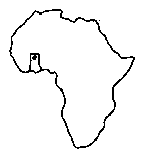Information

What is BULUK?
BULUK is a journal specialising in the culture, society and political life of the Bulsa, intended for publication once a year. The first issue appeared in 1999. The English meaning of Buluk is “land of the Bulsa”.
Who are the Bulsa?
The Bulsa (also Builsa; pronunciation: [‘bulsa]) are an ethnic group in Northern Ghana consisting of about 100,000 members. The capital of Bulsa North District is Sandema, of Bulsa South District Fumbisi; other villages / towns are Wiaga, Uwasi, Wiesi, Fumbisi, Kanjaga, Gbedema, Gbedembilisi, Siniensi, Kadema, Bachonsa and Chuchuliga. The Bulsa villages Kantegra and Kunkwa are situated in the Mamprugu Moaduri District, Biuk in the Kassena Nankana East District.
Who are the editors of BULUK?
Up to Buluk 10 there were two editors: Ghanatta Ayaric, himself a member of the Bulsa (from Gbedema), is at present (2018) a teacher at a German Secondary School (Gymnasium) at Rio de Janeiro (Brasil).
Dr. Franz Kröger, a retired teacher and anthropologist, worked in a freelance capacity for the Institute of Ethnology (University of Münster, Germany) and has specialised in Bulsa and Koma culture (religion, language, history, material culture, social structure etc.). From Buluk 11 onwards he has been the only editor of the Buluk journal.
Aims of BULUK and its target groups
It is not the intention of the two editors to publish a purely scientific journal. Issues to date contain opinions of members of the Bulsa in Ghana or abroad; important events that have happened in the Bulsa area since the appearance of the last edition; poems and stories of Bulsa authors or about Bulsa subjects; interviews with Bulsa in the diaspora and in Ghana; papers on Bulsa history, traditional religion, crafts, modern development projects, latest news, books and papers on the Bulsa etc. As BULUK is the only journal with such a program, its target group is very large: literate Bulsa in the Bulsa District or other parts of the world, anthropologists, tourists, and all people who feel to be friends of the Bulsa people or want to know more about their culture and topical events in the Bulsa District.
Note for Contributors
All copies should be sent either to Franz Kröger or Ghanatta Ayaric (addresses see above). The
text of the contribution should be written as a typescript, onn a CD/DVD or as an e-mail attachment.
Authors of long articles are requested to add (if possible) their portrait photo (e.g. passport-size)
and, should the occasion arise, photos and drawings illustrating the articles. On the average, the
articles should not exceed five pages. Shorter articles, small notes, letters to the editors etc. are
welcome. Authors’ royalties or compensations for expenses (paper, photocopies etc.) cannot be
paid, but the contributors of articles will receive one free copy of the journal.
In order to facilitate the work of the editors authors should pay attention to the following guidelines:
1. Avoid underlining words or sentences.
2. Bold text should only be used in headlines.
3. Foreign words, including Buli, in the English text should be italized. Proper names of persons
and geographical names should not be italized.
4. Mention all the sources of text or photos which were not produced by yourself.
5. Orthography: Ethnic names, which have a plural form in the vernacular language, should not
be suffixed by the English plural -s, for example:
Bulsa (not Bulsas), Mamprusi (not Mamprusis).
6. We prefer the following spellings: Bulsa (not Builsa), ch instead of ky (Chuchuliga instead of
Kyukyuliga, cheng instead of kyeng), j instead of gy (jenta instead of gyenta).
7. In accordance with British capitalisation, use capital initials in proper names, e.g. Bulsa, Buli,
Buluk, Kasem (not bulsa, buli, buluk, kasem).
Copyright
The copyright belongs to the authors of the articles and to the publishers of the journal.
Quotations and even the adoption of longer parts of articles of our BULUK journal are welcome, if at least the name of the author and the name, number and year of the journal are mentioned at a clearly visible place, e.g. “Evans Atuick, Buluk 7, 2013”. In internet quotations a hyperlink may be given to the specific number of Buluk. For the publication of complete articles the permission of the publishers should be requested.